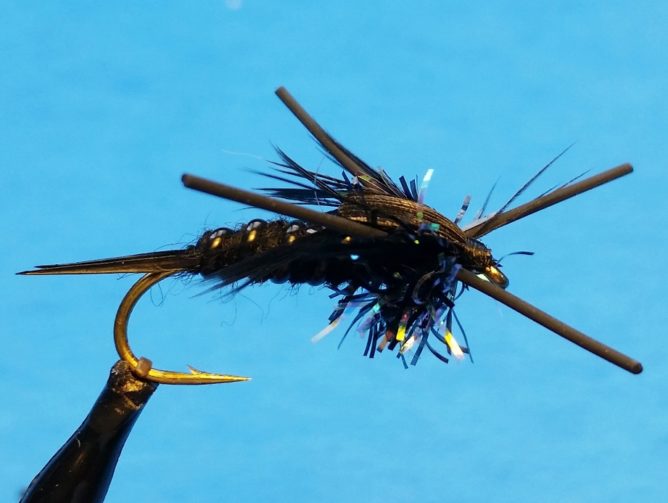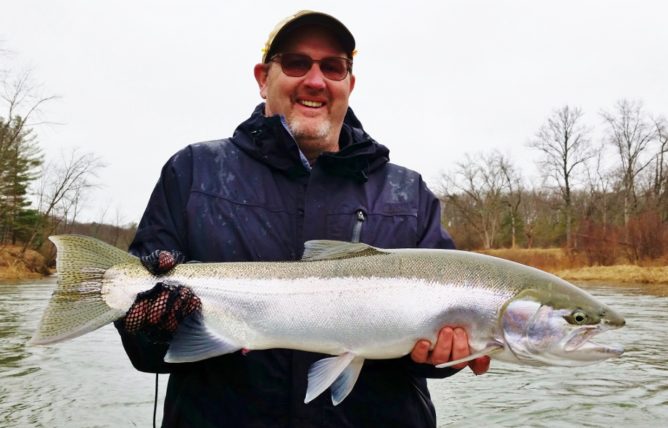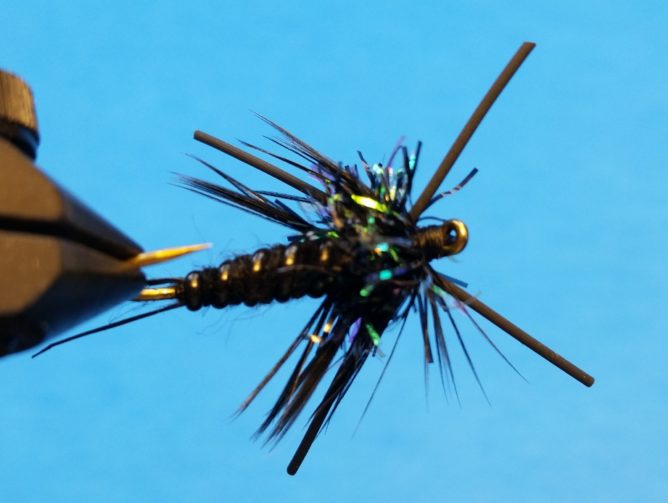Large stonefly nymphs populate most of our trout and steelhead rivers and because of their size, they offer a calorie packed snack to fish. Water levels often fluctuate dramatically in the Spring as snow melts and this increase in water flow often dislodges these large nymphs and send them tumbling downstream making this pattern ideal for Spring Steelhead.
The clarity of the water typically becomes stained with increased flows due to winter’s thaw and rains which is why this large profile fly pattern and sparkle thorax help attract the fish’s attention. The color black remains visible in the water column as it contrasts the stained water while the rest of the pattern does a good job of providing a stoneflies silhouette. And the rubber legs just add a little motion while it dead drifts.
This variation of Bowerman’s Sparkle Body Stone fly pattern has worked for steelhead in the spring, but also in late fall when stoneflies seem to get active crawling around the river bottom.
Recipe
Hook: TMC 3761 #6
Thread: Uni 6/0 Black
Lead: Lead Wire .030 (optional)
Tail: Goose or Turkey Biots – Black
Body: Black Dubbing – Awesome Possum
Rib: V-Rib Medium Black
Thorax: Estaz or Pearl Chenille – Black
Hackle: Hen Saddle – Black
Legs: Medium Round Rubber Legs – Black
Wing case: Turkey Tail treated with Flex Seal or Crystal Clear
Tying Instructions
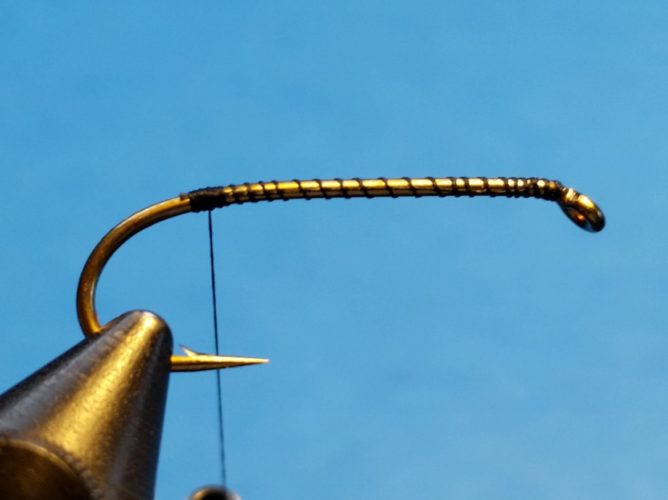 Step 1. Wrap a base layer of thread to above the hook barb.
Step 1. Wrap a base layer of thread to above the hook barb.
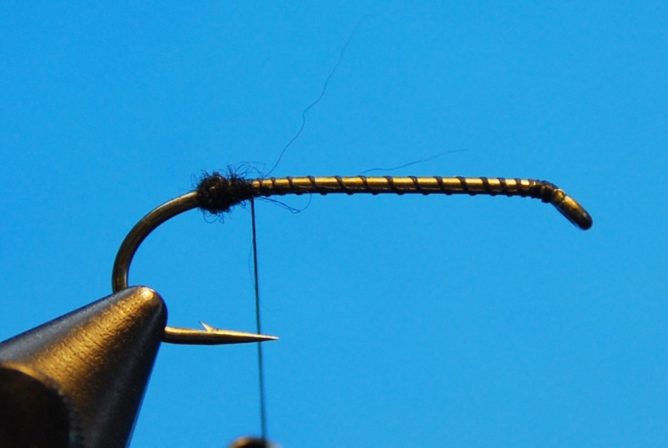 Step 2. Tie in a very small ball of dubbing above the barb to help spread the tail.
Step 2. Tie in a very small ball of dubbing above the barb to help spread the tail.
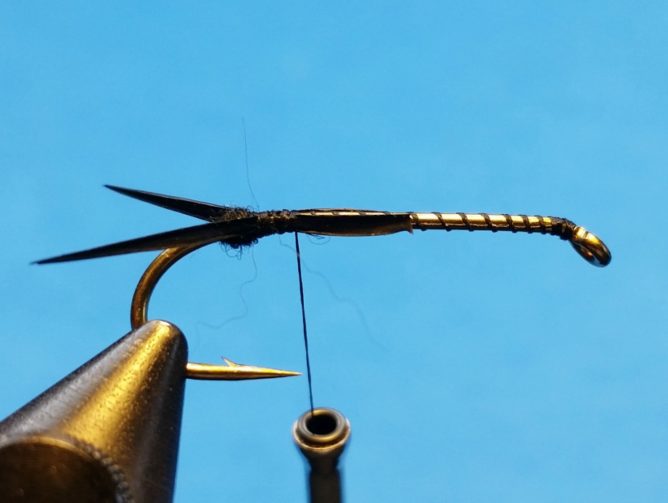 Step 3. Tie in biots – with the natural curve opposing each other in opposite directions.
Step 3. Tie in biots – with the natural curve opposing each other in opposite directions.
Use the dubbing ball to help spread them. The pointed ends should extend the distance of the hook gape.
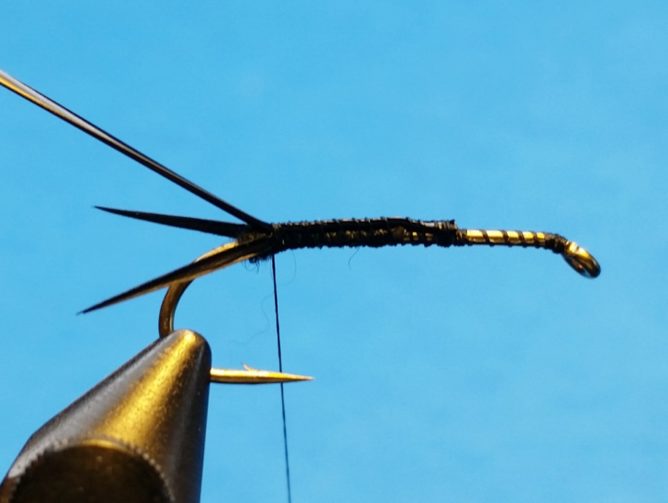 Step 4. Tie in the v-rib along the shank so the convex (rounded) side is against the
Step 4. Tie in the v-rib along the shank so the convex (rounded) side is against the
hook shank where the material extends beyond the hook bend.
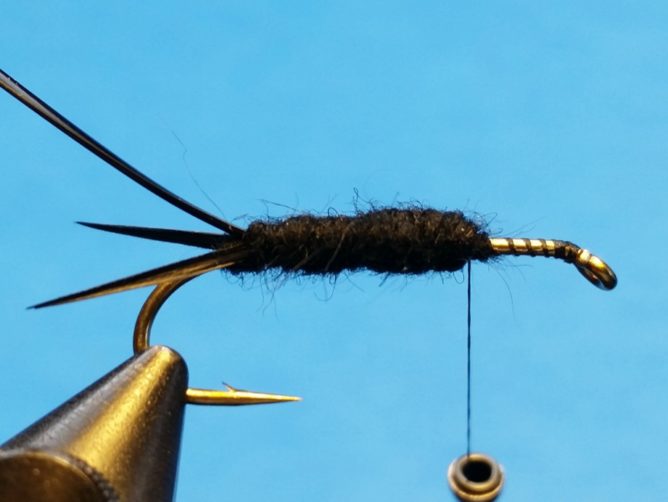 Step 5. Dub a tapered body from the tail 2/3rds of the way up hook shank.
Step 5. Dub a tapered body from the tail 2/3rds of the way up hook shank.
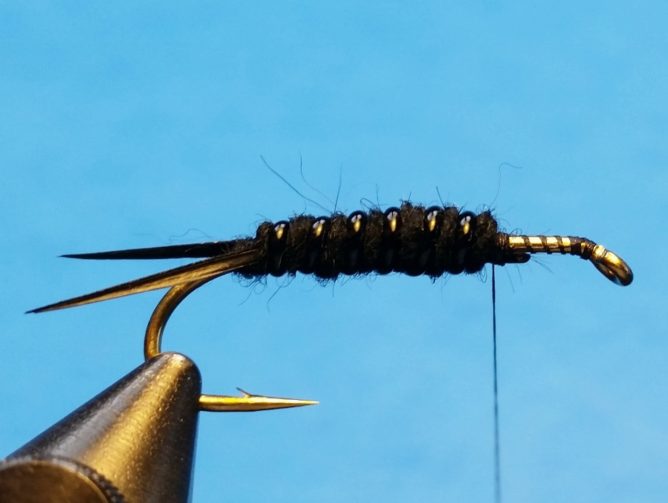 Step 6. Wind rib, convex (rounded) side up, through body creating a segmented look.
Step 6. Wind rib, convex (rounded) side up, through body creating a segmented look.
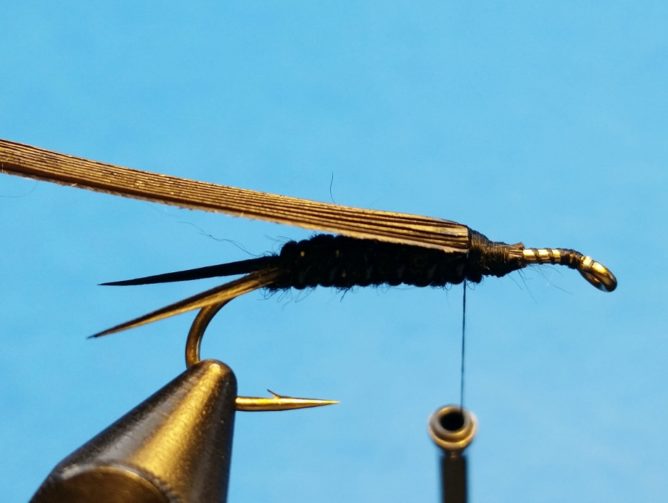 Step 7. Tie in wing case, dull side down, extending over the body area.
Step 7. Tie in wing case, dull side down, extending over the body area.
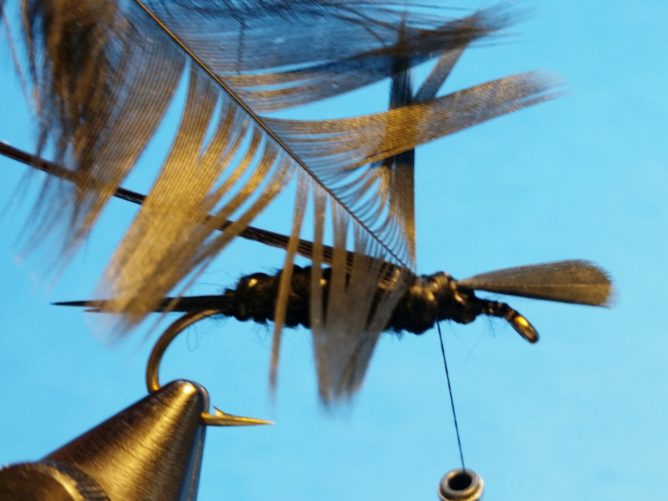 Step 8. Tie in the tip of a hen saddle feather convex side facing rear of the hook.
Step 8. Tie in the tip of a hen saddle feather convex side facing rear of the hook.
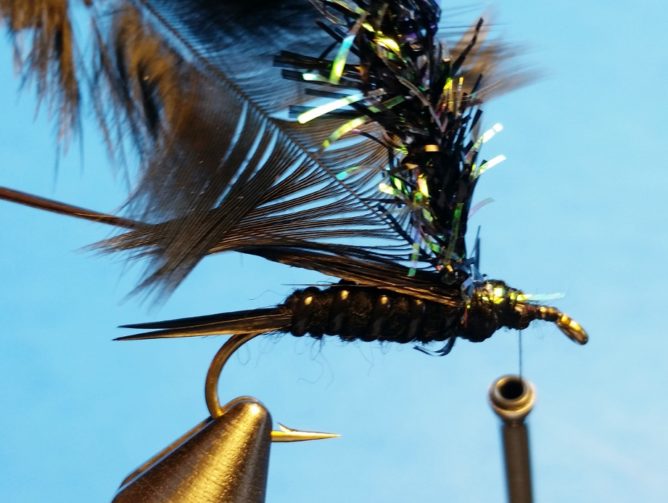 Step 9. Tie in Estaz or Chenille just in front of where saddle hackle is tied in.
Step 9. Tie in Estaz or Chenille just in front of where saddle hackle is tied in.
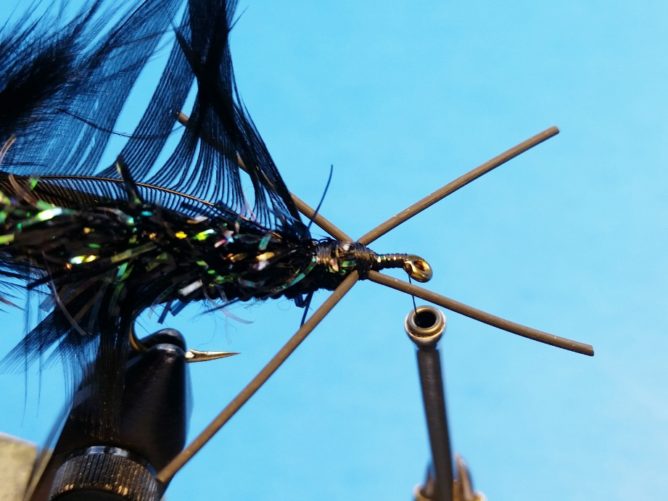 Step 10. Tie in a rubber leg on each side of the thorax.
Step 10. Tie in a rubber leg on each side of the thorax.
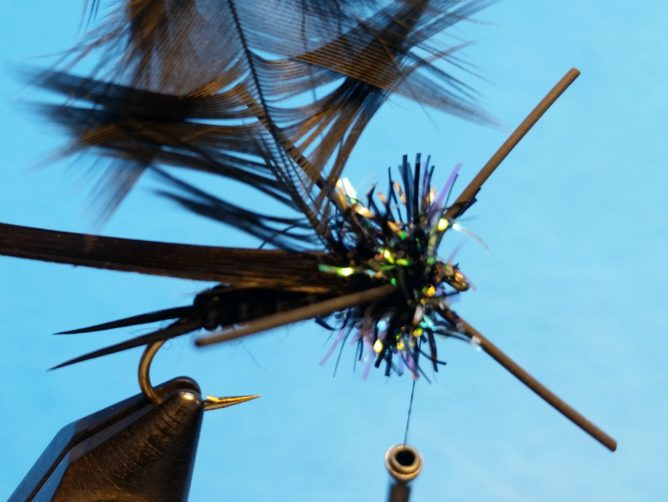 Step 11. Wind thorax material toward the eye so rubber legs are separated – maintaining an X profile.
Step 11. Wind thorax material toward the eye so rubber legs are separated – maintaining an X profile.
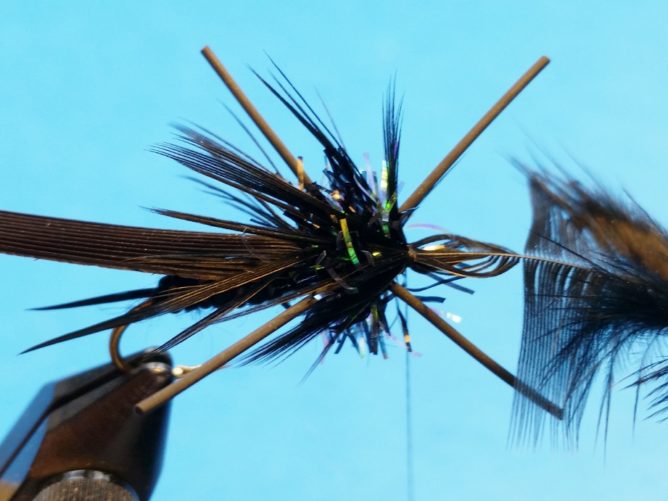 Step 12. Gently pull the saddle feather over the top of the thorax and tie down.
Step 12. Gently pull the saddle feather over the top of the thorax and tie down.
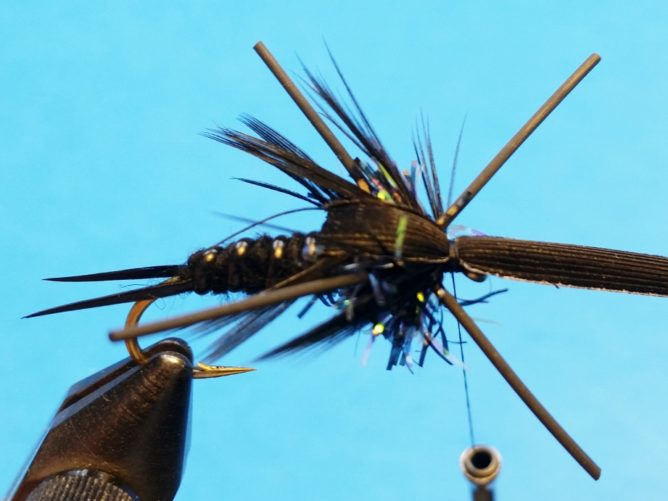 Step 13. Pull wing case over thorax, trim and whip finish.
Step 13. Pull wing case over thorax, trim and whip finish.
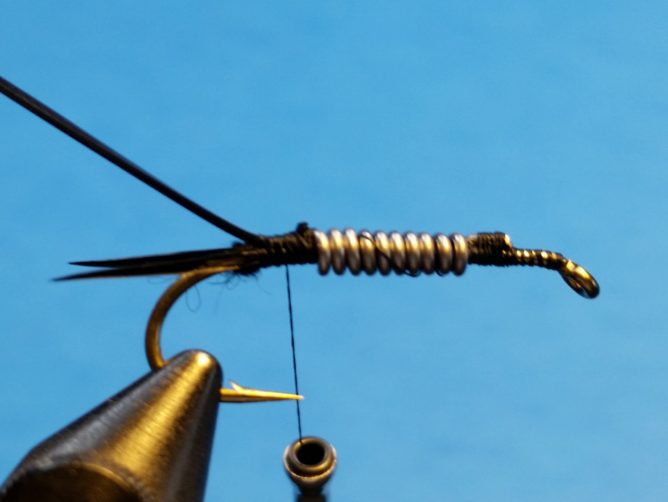 Option: If adding lead wire, do this step between steps 3 and 4.
Option: If adding lead wire, do this step between steps 3 and 4.
Tie lead wire 1/3rd of the shank’s length behind the eye. After securing, wrap the
lead around the shank towards the hook bend and tie off above hook point.
When tying the V-Rib at Step 4, tie it just behind the lead wire.

